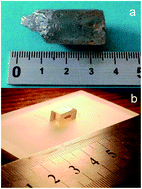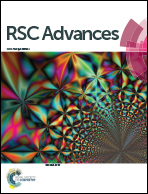Optical and electronic properties of lithium thiogallate (LiGaS2): experiment and theory
Abstract
We report the relation between the optical properties and electronic structure of lithium thiogallate (LiGaS2) by performing XPS and XES measurements and theoretical calculations. According to the XPS measurements, the LiGaS2 crystals grown by the Bridgman–Stockbarger method possess promising optical qualities, low hygroscopicity and high stability upon middle-energy Ar+-ion irradiation. The difference in the LiGaS2 band gaps obtained by theoretical calculations and experimental measurements was, for the first time, reduced down to 0.27 eV by applying the Tran–Blaha modified Becke–Johnson (TB-mBJ) potential where the Coulomb repulsion was considered by introducing Hubbard parameter, U. The TB-mBJ+U method also reproduces the XPS spectrum well. The TB-mBJ+U band-structure calculations of LiGaS2 are found to be in good agreement with the XPS and XES experimental data. The accurate electronic structure of LiGaS2 allows further investigation of the optical properties. The relation between the photoluminescence of LiGaS2 and its electronic structure was revealed. Moreover, the theoretical results show the possibility of emissions at higher energy levels in LiGaS2, that has not been measured in experiments yet. Good phase-matching of LiGaS2 was expected to occur at energy levels of 5, 6, 6.2, 7, 7.2, and 8 eV.



 Please wait while we load your content...
Please wait while we load your content...